Teams
A detailed look at the fields and dependencies in the Teams records, how to create a new Team record & editing existing Teams.
![]()
The “Teams” records groups of Users together into working units. They also determine a specific User to be a “Team Leader”. Users can exist as part of multiple Teams if required. Teams are used within the Calendar ![]() function to filter the calendars display.
function to filter the calendars display.
Some features are dependent upon your select plan for your account.
Indicates a feature is only available in Standard plan or above.
Indicates a feature is only available in Enterprise plan.
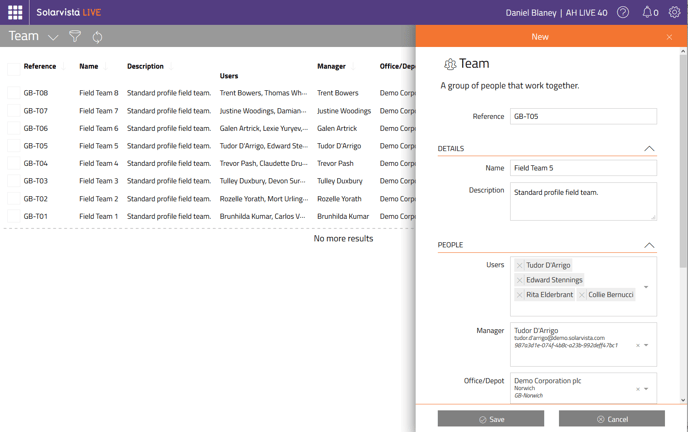
Where Team Records are Used
The following files refer to Team records so if you plan to use any of these, setting up the records in this file will be important or even critical:
Data Sources
- Roster

Work Items
- Follow-up

Activity/Forms
- Request Follow-up

Pre-requisite Files for Team Records
When setting up Team records, it is recommended to review the other data files that may need to be referred to by each record. These are the files that you may need to setup in advance:
Data Sources
- Office/Depots
System
- Users
Field Descriptions for Team Records
The ID section holds the unique ID for the record:
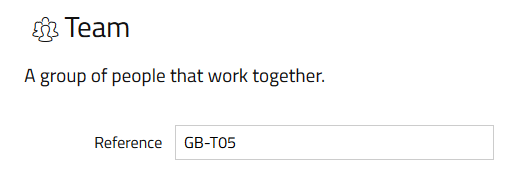
Reference - holds the unique ID for the record (most records in Solarvista have one of these). It cannot contain any spaces or non-standard characters. Once the record is saved, it is not possible to edit it afterwards. In most default situations, the Reference is automatically set using a counter sequence, however, you can setup your own if you prefer.
The Details section holds a name & description of the team:
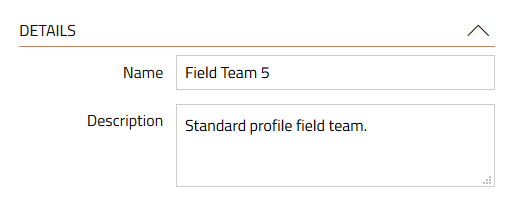
Name – the formal name of the Team e.g. “Team 1”, “Northern Team”, etc.
Description – a text field to describe the team and assist users.
The People section holds the members of the team and their manager:
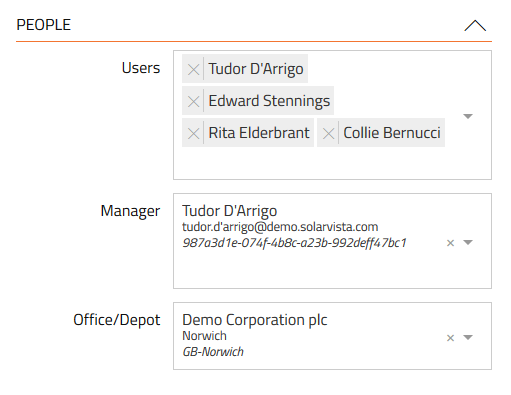
Users – a list of all the team members (these must be registered Users of the system).
Manager – the User that is the designated ‘manager’ or ‘team leader’.
Office/Depot – the Office/Depot where the team resides/is based from.
The Other section holds miscellaneous additional information:
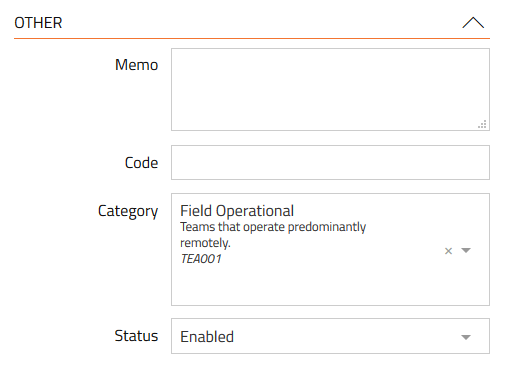
Memo – a free text field that can be used for any purpose.
Code – used to hold an optional alternative ID code. This may be applicable in situations where information is being transferred to other systems via Connectors and the code here is used to identify the record to the other system.
Category – a category for the team e.g. ‘Field”, “North”, “Grade A” etc. These are defined in the Categories file and set with a Type= “Team”. Useful for business analysis and reporting.
Status – defines the status of the record as follows:
- Disabled – is not active. The record will not appear for selection in other parts of the system.
- Enabled – is active. The record will appear for selection in other parts of the system.
Creating a New Team Record
To create a new Team record:
- Click on the “Plus” button.

A menu will appear. - Within the “Data Sources” section, find “Team”.

- Click on “Team”.
- A new “empty” Shift Pattern record will appear.
- Populate all fields as you require.
- Click on the “Create” button.

- You may need to refresh the page to see the new record in a view using the Refresh button on the top bar.

Editing a Team Record
To edit a Team record:
- From the main menu, select Teams.

The default view for Team will open. - Click on the Quick Filter button.

- Enter criteria for the Team record you are looking for and click Apply button.

- The view will update. Find the record you are wanting to edit.
- Click anywhere on the row that shows the record. The record will open.
- You can edit any field that allows editing (some could be set to read only).
- Click on “Save” button to save changes.

Deleting a Team Record
To delete a Team record.
- From the main menu, select Teams. The default view for Teams will open.
- Click on the Quick Filter button.

- Enter criteria for the Team record you are looking for and click Apply button.

- The view will update. Find the record you are wanting to delete.
- On the left side of the view is a column containing checkboxes.
- Check the box of the record you want to delete.
- Click the “Delete” button on the top right.

A slide in dialog will appear prompting you to confirm the delete, by typing in the word “DELETE” again. - To confirm, click the “Delete” button and the record (or records) will be deleted.

Note: You can delete Team records referred to only by other Data Sources however this will leave those records without an associated to a valid Team record. If this happens by accident, you can manually recreate the record ensuring the Reference is identical. You can also change the status of the record to prevent it appearing on screen in future whilst maintaining historical integrity.
Customising or Adding New Fields
Solarvista™ is built upon a uniquely flexible platform that allows you to edit fields (or remove them in some cases) as well as add your own fields. These new fields (or edited characteristics of existing fields) automatically become available within the web portal and the mobile apps. For more information, refer to the Customising section.
Importing Cause Data in Bulk using Import Tool
If you have a lot of Cause information to enter, you may prefer to upload this using the Import Tool that’s built into Solarvista. The Import Tool enables Cause records to be created from “CSV” text files. CSV files can be created from a wide range of popular applications including Microsoft Excel. For more information on importing data into Solarvista, please refer to the article here.
Continue the Setting Up Data series with Vehicles.